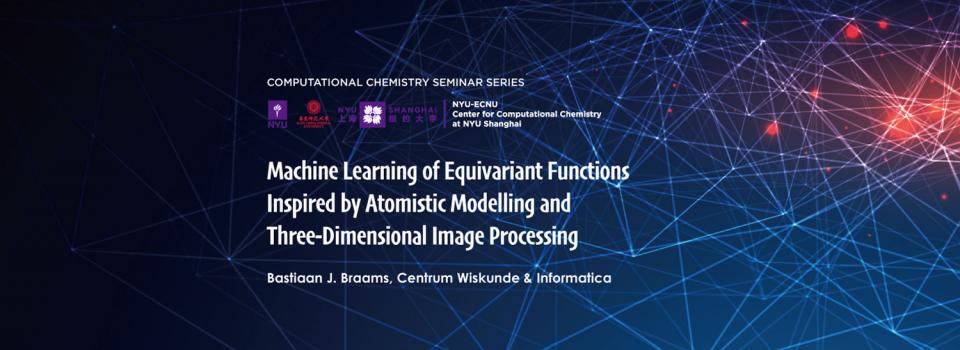
Abstract:
Over the past several years, big data methods, including but not limited to use of deep convolutional neural networks, have been very successful in computer science applications and there is increasing effort to apply big data or machine learning methods to problems in physical science and engineering. Conversely we are seeing that problems from physical science are influencing machine learning research done in computer science environments. A very important application of big data methods in physical science where we see this mutual influence is the construction of effective interatomic potentials and force fields for atomistic modelling of molecular and condensed phase systems. This application shares features with certain applications in three-dimensional image processing in having data associated with point clouds and in seeking to represent functions that are invariant or covariant with respect to a permutation group (applied to the labelling of points in the cloud) and with respect to spatial groups of translations, rotations and inversion. Some by now almost classical big data approaches to the atomistic problem include use of Gaussian process approximation (kernel ridge regression) and use of spherical wavelet expansions. In addition, deep neural networks are being applied and here we see the closest link to machine learning research with key words such as Point Cloud Convolutional Networks, Deep Sets, Spherical CNNs, Tensor Field Networks and Gauge Equivariant Neural Networks. The presentation will provide a survey of these machine learning developments in the context of the application in physical science.
Biography:
Dr. Bastiaan J. Braams obtained his Ph.D. from Utrecht University in the Netherlands in 1986 for work in fusion plasma modelling. He then moved to the United States for a postdoc at Princeton Plasma Physics Laboratory (PPPL) after which he was at Courant Institute, New York University, from 1989 to 2003. In fusion plasma modelling he is best known for development of a still very widely used code (B2.5, part of B2-EIRENE and of SOLPS) for boundary plasma simulations. At Courant he was mainly involved in fusion plasma research, but around the year 2000 his interests shifted towards quantum chemistry and molecular modelling. He pursued molecular physics in the Chemistry and MathCS departments at Emory University from 2003 to 2009. His special area of work was the construction of molecular potential energy surfaces in full dimensionality for systems of about 5 to 8 atoms using permutationally invariant polynomials. In 2009 he moved into a science management position at the International Atomic Energy Agency (IAEA) in Vienna, Austria, where he was head of the Atomic and Molecular Data Unit, part of the Division of Physical and Chemical Sciences. At the end of 2016 he moved back to the Netherlands and obtained an affiliation with Centrum Wiskunde & Informatica (CWI), the Dutch national center for mathematics and computer science. During the months July to September 2019 he is visiting the State Key Laboratory of Molecular Reaction Dynamics at the Dalian Institute of Chemical Physics, Chinese Academy of Sciences.
Seminar Series by the NYU-ECNU Center for Computational Chemistry at NYU Shanghai


